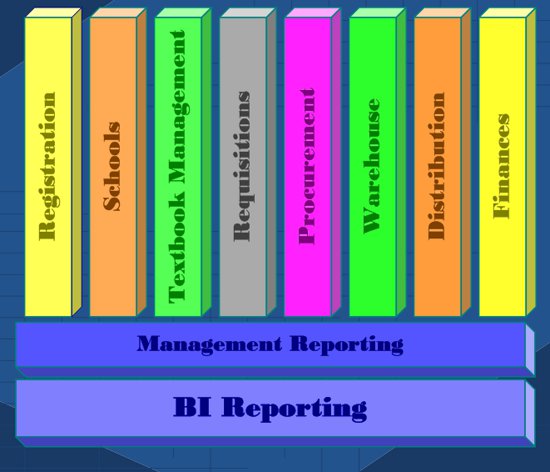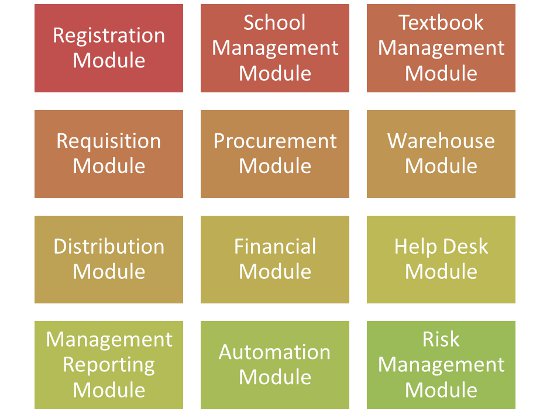|
The Edu-TOOL is a Supply Chain Management system designed specifically for the complexity and challenges of the provisioning of Learner and Teacher Support Material (LTSM). It is a web-based, modular, end-to-end solution, designed to simplify the procurement processes, manage the on-line ordering of educational material and the facilitation of the distribution of said material to educational institutions.
The software will facilitate the capturing of detail information on schools, suppliers, distributors, budgets and facilitate the transactions to procure LTSM supplies and distribute the supplies to schools. As it is a web-based system, various role players can have access to the data to monitor and evaluate processes for each school and district. The Edu-TOOL system includes the following:-
- Registration of suppliers, distributors and products;
- School Management including budget control;
- Text Book Management to assist with the retrieval of issued text books;
- Requisition capturing by schools and approval by PDEs;
- Procurement;
- Warehouse from where material is distributed;
- Distribution using SMME distributors;
- Finances;
- Risk Management;
- Help Desk functionality, and
Automation provides for scanning of products in the warehouse, handheld recording of delivery with video evidence and text book issuing and retrieval.
The Edu-TOOL system provides for flexible configurations to reduce application maintenance and provide clients with the flexibility to set their own parameters.
Management Reporting includes the percentage spent by schools of their allocated budget, monitoring of the complete process from requisition by schools to delivery to them, monitoring of procurement patterns, monitoring of allocated budgets.
The BI Reporting component provides for a quick view to management of the procurement processes and progress and lead times to expedite distribution and address problem areas. It hosts real time information collated from various sources, of performance, problem areas or unusual exceptions and provides an integrated view, enabling better decision making by providing immediate access to key business information.
Bar charts compare the budget-, delivered-, requisitioned- and ordered values. The delivery performance of the different provinces indicates where the problem areas are. The user will have additional selection criteria to select regions and districts, projects or date periods. This will change the data representation on the graphs, based on the criteria.
By selecting a region/district within the province in a chart opens a regional/district dashboard with information related to the specific region or district.
Clicking on a graph drills down to a summarized list where problem areas within the distribution chain can be analysed.
The graphical representation includes the following:-
- Budget status
- Distribution- and Delivery status
- Lead times
- Text Books Received versus Issued to learners
In addition to the functionality required for the procurement of the LTSM, Edu-TOOL also includes a web based online system that allows schools to manage their textbook stock to track the condition of the textbook. At the end of each academic year, the system is used to retrieve textbooks from learners, record the current condition, and issue dunning letters in cases where the learner either failed to return a textbook, or where the condition of the textbook deteriorated more than what is deemed acceptable in so far as making the textbook unusable during the next academic year.
This module accommodates advantaged as well as disadvantaged schools as various options are provided for within the phases - School Inventory Introduction, Text Book Issue and Text Book Returns. The aim is to implement a process which is flexible, easily implemented and less time consuming than the text book management processes currently utilised on school level.
The key objectives of the Text Book Management module are to ensure that:
- the department is able to view the textbooks in circulation;
- all Learners are issued with the correct text books;
- the return of text books are captured correctly and the Learners who do not return text books are identified;
- text books can be redistributed from one school to another should it be required, and
- reports on different areas such as book locations, surplus/shortages at schools, learner issues can be drawn.


|



